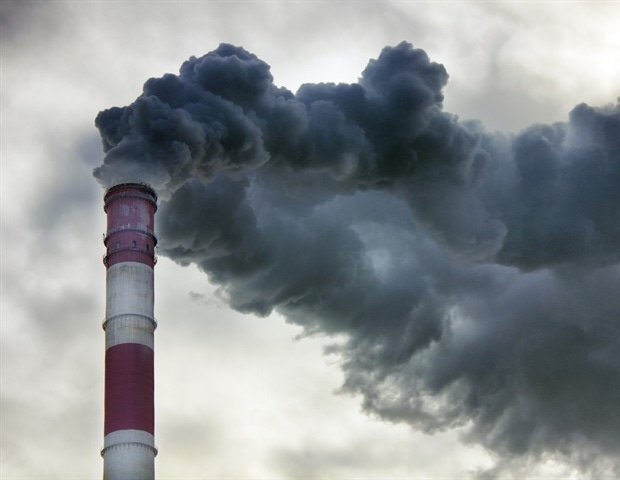Climate-driven wildfires quickly transport harmful particles containing toxic chemicals over long distances, endangering air quality in the New Jersey and New York areas, according to Rutgers Health research.
Posted on Environmental Science & Technology and to be featured on the cover of the next issue of the journal, the study assessed the physical and chemical characteristics of fire-related particles and was the first to report this characterization from a climate-driven fire event in the densely populated Northeast.
Particulate matter is a leading environmental factor in the global burden of disease, with climate-induced fires a major source. In the US, fires caused by climate change are reversing decades of improvements in ambient air quality.”
Jose Guillermo “Memo” Cedeño Laurent, main author, assistant professor at Rutgers School of Public Health and director of the Rutgers Climate Adaptive and Restorative Environments Lab
The issue is pressing as there is growing evidence to suggest that fire pollution is associated with worse health effects compared to non-fire pollution. Emerging evidence includes recent epidemiological studies linking the fire event to respiratory and cardiovascular emergency department visits in New York, although little is known about the mechanisms behind these effects.
Using advanced physicochemical analysis of the particles, researchers discovered large amounts of high molecular weight polycyclic aromatic hydrocarbons (PAHs), which are carcinogenic organic compounds, at the peak of the June 7 incident.
“We found very high concentrations of ultrafine and fine particles during the height of this fire, nearly 10 times exceeding national air quality standards and any previous record in more than five decades of air quality monitoring in the northeastern US,” said Cedeño Laurent. .
Senior author Philip Demokritou, Henry Rutgers Chair and professor of nanoscience and environmental engineering at the Rutgers School of Public Health and director of the Nanoscience and Advanced Materials Center (NAMC), said: “Such small particles have the ability to penetrate deep into the lung. and may cause adverse health effects, as recently reported in the New York area by epidemiologic studies.”
The findings showed that the estimated potential inhalation dose of particulate matter (PM10) over a 72-hour exposure period was found to be more than 9 micrograms of particulate matter deposited in the lungs.
“Our findings regarding the extremely high concentrations of ultrafine particles and their significant PAH content are proving invaluable in guiding many ongoing mechanistic studies at NAMC,” said Cedeño Laurent.
He added that these studies investigate the effects of such particles on various organs, including the lungs by Reynold Panettieri and Joseph Jude at Rutgers Robert Wood Johnson Medical School and Bruce Levy and Yohannes Tesfaigzi at Brigham and Women’s Hospital in Boston. the heart from the cardiovascular program of the National Heart, Lung, and Blood Institute. the brain by David Leong at the National University of Singapore. and the reproductive system by Shuo Xiao and Andrew Gow at the Rutgers Ernest Mario School of Pharmacy.
“The findings will enhance our understanding of the physical and chemical characteristics of forest fire smoke and its effects on human health,” said Cedeño Laurent.
The researchers said their data underscore the importance of further investigating the physical and chemical processes of fire-related air pollution compared to non-fire pollution.
“The results of our study can be used by public health assessors to assess risk and develop strategies to help our communities,” said Dimokritou, “especially those in areas already at risk from air pollution to adopt the increasing phenomena of forest fires”.
In addition, Cedeño Laurent and Demokritou said their results offer new insights into the evolving composition of particles. Their analysis of the optical properties of the particles will be presented in a companion study, led by Rutgers School of Public Health’s George Kelesidis, which examines the effect of particles from wildfires on Earth’s temperature and the further influence of to climate change on a dense scale. inhabited cities.
Rutgers study co-authors include Rutgers School of Public Health fellow Georgios Kelesidis, postdoctoral fellows Hooman Parhizkar and Leonardo Calderon, and doctoral candidate Lila Bazina.
Source:
Journal Reference:
Cedeño, G., et al. (2024). Physicochemical characterization of particulate matter in the New Jersey/New York City area resulting from the June 2023 Quebec Canada wildfires. Environmental Science & Technology. doi.org/10.1021/acs.est.4c02016.
